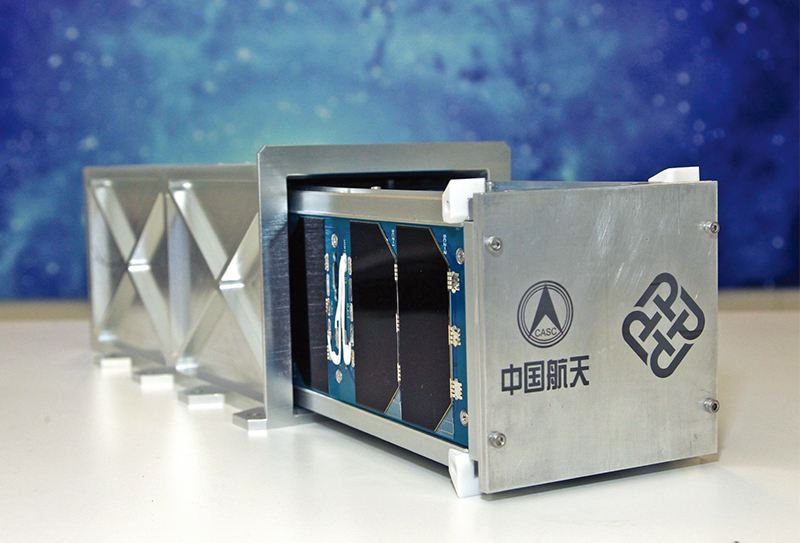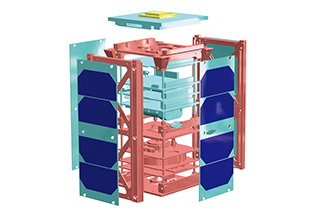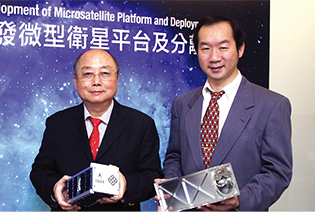
PolyU-developed microsatellite platform and deployment system
A microsatellite platform and deployment system jointly developed by PolyU and Aerospace Dongfanghong Development Ltd is set to make zero gravity experiments far more affordable and accessible.
A key limitation to research conducted in space has long been the cost of developing, constructing and deploying satellites. With so many resources needed, few organizations have been able to launch experimental payloads.
That is about to change, thanks to a space development team led by Prof. Yung Kai-leung, Associate Head of PolyU's Department of Industrial and Systems Engineering, and Aerospace Dongfanghong Development Ltd. in Shenzhen. In September 2015, China successfully launched the "20 satellites in one rocket" of Long March 6. In this historical mission, they jointly developed a microsatellite platform and a deployment system.
The research team designed the microsatellite platform and deployment system which were installed in the "Kaituo-1B" microsatellite. Being the first such space device developed by Hong Kong, the invention has advantages including lowcost, light-weight, easy-to-assemble, simple-to-manufacture, reusable in ground tests and spaceflight proven.
On the day of the rocket launch,"Kaituo-1B" piggybacked on its mother satellite "Kaituo-1A" and was separated at 500 km altitude to perform a series of verification tests and experiments in space. Among those experiments was the "Integrated Experimental Payload" designed by Dr Cheng Ching-hsiang, Assistant Professor of the Department of Industrial and Systems Engineering and his team. The objective was to monitor ground images, space particles and chamber environment. The designed life span of "Kaituo-1B" is three months. It is expected that "Kaituo-1B" will de-orbit eight years later and return to the atmosphere without creating any space debris.
This microsatellite technology will simplify the procedures and reduce the costs of future space research experiments, benefiting a wide range of disciplines. For example, low cost space-experiments will become possible in the tertiary and secondary education sectors, which is sure to arouse interest in science among students. A critical use in the aviation industry could be in tracing air traffic. In the advanced materials and pharmaceutical industries, the low cost of using the platform for zero-gravity experiments is likely to expedite the development of new materials. The team is now looking to optimise the platform design, reduce its weight and development cost, and enhance its ease of use. ♦


